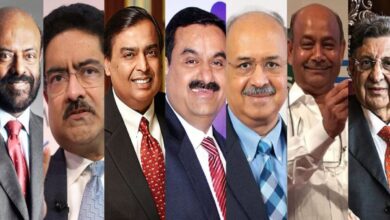Tesla drops ‘full self-driving capability’ option for new vehicles (updated)
When Tesla introduced “Full Self-Driving Capability” for its Autopilot system as an optional Model S, Model 3, and Model X upgrade in October 2016, the automaker said it would roll out the autonomous mode via an over-the-air update after federal regulators gave it the green light. But today, two years after the upcharge’s debut, Tesla’s doing away with it to “prevent confusion.”
The move comes months after Tesla CEO Elon Musk said that Version 9 of Autopilot, which released through its early access program in September, would lay the groundwork for advanced driverless features. Previously, Musk pledged that most Tesla models would offer “full self-driving” capabilities by 2019.
The $8,000 option’s removal appears to be temporary. Earlier this year, Bloomberg reported that Tesla was seeking 100 employees to join an internal Autopilot testing program. Workers who agreed to share 300 to 400 hours of driving feedback with the company wouldn’t have to pay for full self-driving capabilities or a premium interior — a $13,000 savings.
Also available off menu for a week. Was causing too much confusion.
— Elon Musk (@elonmusk) October 18, 2018
“Full Self-Driving Capability” has been controversial from the start.
Prior to the departure of several Autopilot executives including Sterling Anderson, former AMD chip designer Jim Keller, and Swift programming language architect Chris Lattner, Tesla owners filed a class action lawsuit alleging that Autopilot was “essentially unusable and demonstrably dangerous”; the company settled out of court in June. Separately, consumer advocacy groups including Consumer Watchdog have accused Tesla of “deceptive and unfair practices in advertising and marketing” regarding Autopilot.
Autopilot was determined to have been engaged in the moments leading up to a fatal Model X collision this spring — the second fatality involving Autopilot since a crash in May 2016. Separately, the driver-assistance system has been blamed for a number of fender benders, including one earlier this year in which a Tesla Model S collided with a parked Culver City fire truck.
In more bad news for Autopilot, this month, in its first-ever benchmark of automated driving systems, Consumer Reports put GM’s Super Cruise ahead of Tesla’s software, followed by Nissan’s ProPilot Assist and Volvo’s Pilot Assist.
Unlike autonomous cars from Google spinoff Waymo, GM’s Cruise Automation division, and others, Tesla’s Autopilot hardware omits lidars — the laser-based sensors that map surroundings from reflections. Musk, who’s called lidar “a crutch,” contends that its eight cameras, 12 ultrasonic sensors, and front-facing radar — in tandem with its onboard computer and software stack — is sufficient for full autonomy.
In October, Tesla released its first quarterly vehicle safety report, which detailed the number of accidents involving that occurred while Autopilot, Tesla’s advanced driver-assistance system, was engaged. According to Tesla, the past three months saw one accident or “crash-like” event — near miss — for every 3.34 million Autopilot miles, versus one for every 1.92 million miles driven by with Autopilot disabled.
“As we are working hard to make our cars the safest and most capable cars on the road in terms of passive safety, active safety, and automated driving, we must continue to encourage driver vigilance on the road — that is, by and large, the best way to prevent traffic accidents,” Tesla wrote.
This week, Musk said that a forthcoming in-house computer chip would improve Autopilot performance between 500 and 2,000 percent.
Source: VentureBeat
To Read Our Daily News Updates, Please visit Inventiva or Subscribe Our Newsletter & Push.




